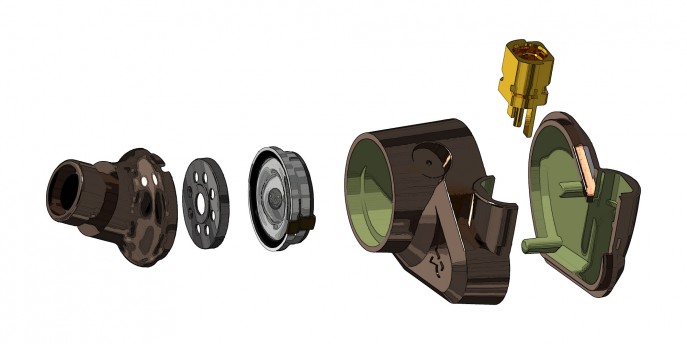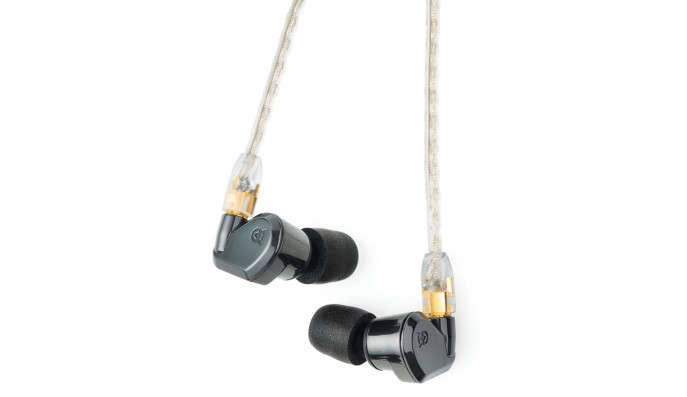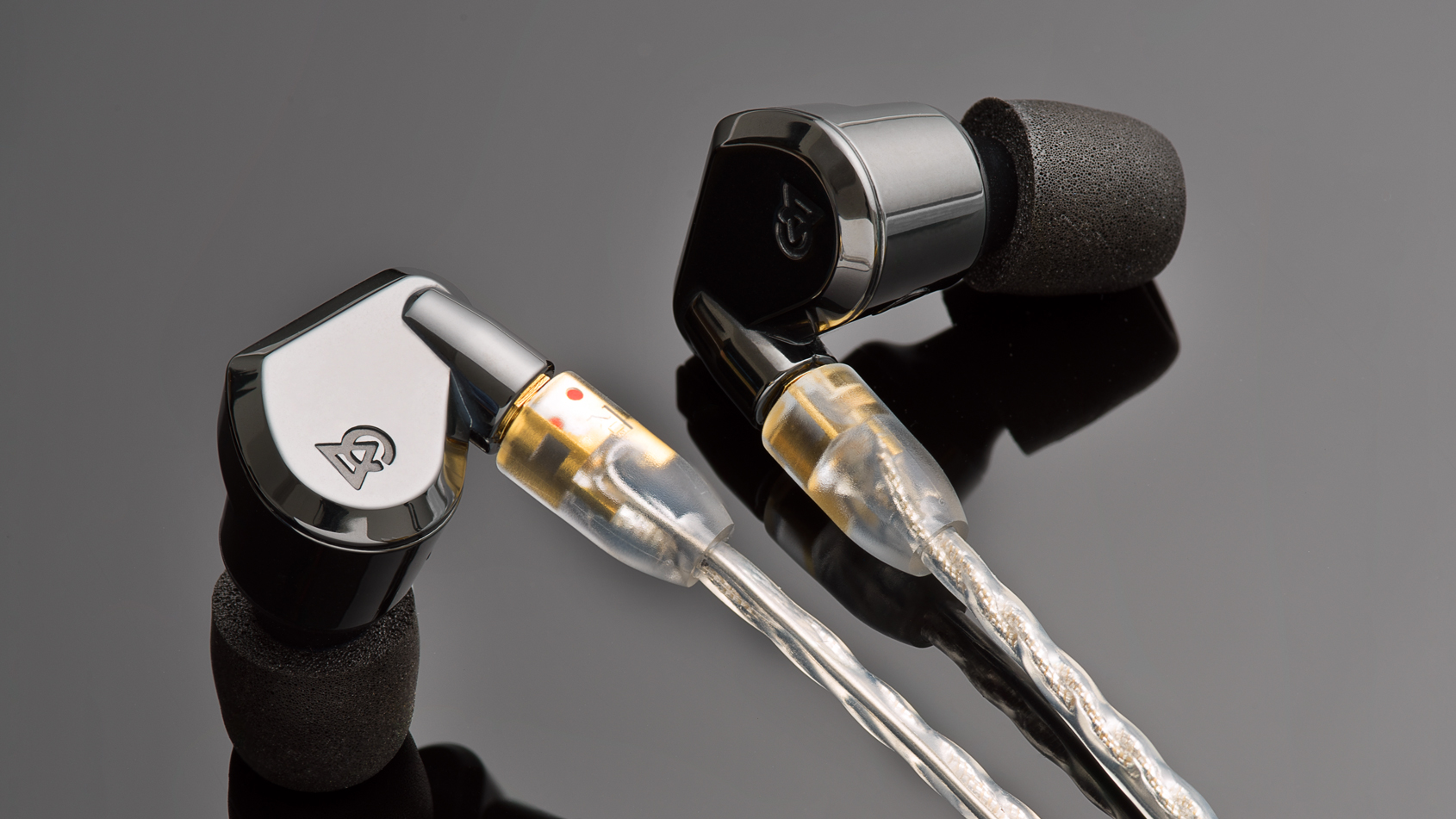Campfire Audio may be one of the youngest headphone manufacturers on the market today, but its CEO, Ken Ball, is certainly no newcomer to the industry. He’s the founder and CEO of ALO Audio, known for their wide range of DACs, amps, and cables. Ken has spent numerous hours modifying headphones, disassembling them in order to replace stock cables and re-wire drivers, and finally tuning the transducers. Those who have modified headphones in the past know just how difficult this can be; it can be sluggish and strenuous. Even after taking into account the time and effort required, it’s only possible to improve a headphone so much before hitting the wall set by the headphone’s design limitations. For Ken, designing a headphone from the ground up was a dream.
Ken spent years listening to a variety of headphones and IEMs while making his modifications. During that time he fell in love with the sound of the Sennheiser IE800. He spent countless hours studying what made the IE800 special and devising ways he could improve upon it. Working closely with ALO Audio’s Caleb Rosenau, the two created their first dynamic driver IEM, the Lyra, and Campfire Audio was born.
The Campfire Audio Lyra includes a slew of accessories to accompany the Lyra on long voyages. The first and most obvious accessory is the elegant carrying case. The protective case has a vintage feel thanks to the brown leather exterior and soft, wool lining. The zipper feels durable and unlikely to cause issues, even after repeated use. The wool interior provides a considerable amount of shock absorption, which will prove useful should the case ever find itself plummeting towards the earth.

Tips can make or break an IEM. If you can’t get a good seal then the sound will suffer, and uncomfortable tips will often force the listener to remove the IEM altogether. Campfire Audio addresses this by including three different tips in varying sizes. There’s the traditional silicon tips, a set of standard foam tips, and even a collection of the more premium Comply Tx-400 foam tips. All three come in small, medium, and large sizes, ensuring that anyone can find their perfect tip for daily use. It’s encouraged that owners of the Lyra try all three materials as they will have subtle effects on the sound. To round off the included accessories, a cleaning tool is provided to keep the Lyra in peak performance.
At first glance it’s easy to see that the Lyra is built to last. The enclosure is constructed from a material known as Zirconium Oxide Ceramic (ZrO2). Campfire Audio chose this material for its durability and low vibration properties. One of the issues most IEMs face is reverberation within the housing. The ZrO2 material acts as a natural dampener, leaving more room to focus on the internals.
The Lyra’s driver is constructed from an 8.5mm beryllium diaphragm that’s designed for speed and accuracy. This is paired with a set of rare earth magnets, one of the strongest magnets commercially available. The voice coil is made from a high grade copper clad aluminum wire, chosen for its low weight, and works with the rest of the components to deliver the Lyra’s incredible sound. But more on that later.

Like the Lyra’s ZrO2 body, the silver plated copper 4 conductor tinsel wire cable is built for both sound quality and durability. It’s covered in a FEP jacket and provides separate signal and return for each channel. At one end of the cable you’ll find a pair of MMCX connectors for the Lyra and the other is capped with a standard 3.5mm stereo jack. Campfire Audio has chosen to use custom-hardened MMCX connectors with a beryllium/copper alloy rather than less durable brass connectors in order to increase the life of the cable. A surgical-grade memory wire behind the connectors completes the cable.
Many IEMs are purchased with intent to be worn during travel, and isolation plays a major role when deciding which IEM to use on the road. While the Lyra wasn’t able to achieve the same level of isolation I experience with my 1964 Ears 1964-Q CIEM, it was astonishingly close. This is thanks to the included Comply Tx-400 foam tips. I’ve always been a fan of Comply tips with universal IEMs and it’s great to see that they’re included with the Lyra. They provide a snug and comfortable seal, isolating the majority of outside noise while music is playing. The Lyra was able to block out the majority of a noisy trade-show while playing music at low volume, and when listening at moderate volumes the room noise practically disappeared. Isolation could be improved by using a tip designed for deeper insertion, but I have a sneaking suspicion that the sound quality would be negatively impacted this way.
Another quality of fine IEMs is high efficiency. An IEM that can be driven easily from any mobile device, such as a cell phone or a dedicated audio player (DAP), is key for many buyers. When you’re forced to carry a bulky external amplifier simply to get decent volume from an IEM, you end up sacrificing a portion of the portability that makes IEMs so appealing. The Lyra was easily driven to just shy of painful levels from my iPhone 6 and had plenty of headroom when paired with an Astell & Kern AK100ii. No matter what source you’re pairing with the Lyra, you’ll have no issue setting the perfect listening level.

When all is said and done, the most important aspect of any IEM is obvious; the sound. The Lyra’s strongest point lies in its bass response. The Lyra delivers strong, full-bodied lows which, thanks to the ZrO2 body and beryllium driver, never sound loose and flabby. The Lyra’s grasp extends well into the sub-bass, and yet it does an exceptional job of keeping the range controlled. Make no mistake, these are not bass-heavy headphones by any means, but they will command a powerful low-end when the music demands.
The midrange is where the Lyra begins to show a more restrained and balanced side. Starting with the lower midrange, the sound is very balanced up through the high treble. Mirroring the low end, the treble has great extension and reaches into the upper register with intent. Some may find that the Lyra lacks a bit of sparkle or air for their tastes. For me, I found the treble hit the perfect placement. If the Lyra had more treble emphasis, the mids would most likely suffer. The Lyra’s overall signature is musically balanced with emphases in the lows.
The Lyra’s soundstage was the second aspect that took me by surprise. Many IEMs I’ve experienced have moderately closed-in soundstages, but the Lyra presented itself differently than most. While not as large as a full-size over-ear headphone, or even some balanced armature IEMs, the Lyra was able to present the sound in an out-of-head experience. The speed and control of the Lyra’s driver design provide accurate placement and separation within the soundstage. For a dynamic driver design, its hard not to be impressed.
Simply put, the Lyra is one of the most musical universal IEMs I’ve ever had the pleasure of hearing. Historically I’ve shied away from headphones with a lower-end emphasis, and yet I was startled by how much I was enjoying the Lyra. The richness of the Lyra’s low end never breaks free of its restraints and bleeds into the midrange. It’s always on display but is considerate of everything around it.

Price
$749
Specs
Type: Dynamic Driver – Tuned Port
Driver Units: 8.5 mm with beryllium pvd diaphragm
Earphone connector: Gold plated MMCX
Plug: Gold plating 3.5mm stereo plug
Cable length: Approx. 1.35M
Power: 10mW
Frequency Response: 8 – 28 KHz
Driver Impedance: 16 ohm at 1 KHz
Earphone Impedance: 17 ohm at 1 KHz
Sound Pressure Level: 110 dB at 1V, 1 KHz
THD, total harmonic distortion : < 0.5% (1 KHz, 94dB)
Attenuation : -26 dB















Want to join discussion?
Feel free to contribute!